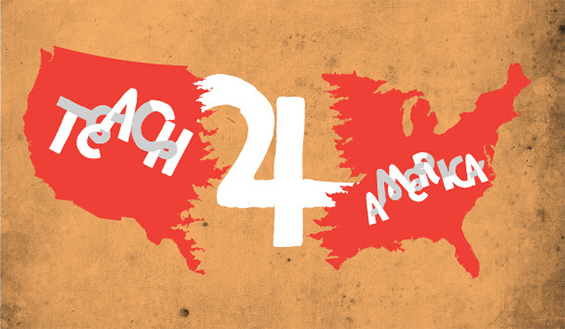 (Photo: edushyster)
(Photo: edushyster)
For the third year in a row, the number of applicants to Teach for America (TFA) has fallen.
This year the number dropped by 16%. Teach for America is an organization that places college graduates in classrooms across the country to instruct in some of the toughest school districts in the nation.
TFA Chief Executive Elisa Villanueva Beard revealed the numbers this week in a letter to supporters. She shared the ways the organization planned to create interest in the program and how the trend could be reversed, writes The Washington Post’s Emma Brown.
“Our sober assessment is that these are the toughest recruitment conditions we’ve faced in more than two decades,” she wrote. “And they call on us all to reconsider and strengthen our efforts to attract the best and most diverse leaders our country has to offer.”
Although TFA received 57,000 applications in 2013, the organization received just 37,000 applications in 2016. Such a severe drop is stressful to a group that has grown so steadily during most of its 25-year history. TFA has become a robust addition to education reform and a pet-project among contributors and alumni.
Currently, TFA includes 50,000 members and alums. Some of this number continue to teach, and some are working in the field of education in alternate ways, such as heading charter schools, assisting nonprofits, and running for public office. Some of TFA’s alumni are well-recognized in the public education community, including Chancellor of D.C. Schools Kaya Henderson and her forerunner Michelle Rhee.
But critics point out that the program trains recruits for only five months and requires just two years of commitment from its prospective teachers. This mercurial procedure, say opponents, creates uncertainty in schools that are already unstable and require long-term efforts from experienced, proven teachers to be successful.
Ordinarily, TFA accepts approximately 10% of those who apply, and Villanueva Beard says the program will not lower its standards for acceptance. Villanueva Beard wrote:
“These shortfalls matter. Corps members are good at their work. Our school and district partners want to hire far more of them than our current recruitment effort is producing.”
Villanueva Beard blames the poisonous debate about education in the country and the improvement in the economy as the two greatest factors for the application decline.
The TFA national office in New York City announced that it was laying off 15% of its staff in February and would hand over more of the decision-making and responsibilities to its 52 regional offices across the country.
TFA receives a fee for each of the teachers it places. So now, regional offices, as well, will be forced to make “organizational changes” to keep costs adjusted to accommodate the new, smaller system.
In an effort to attract more students to TFA, the organization is going to begin recruiting students sooner in their college career in the sophomore and junior years. By doing so, students will have the opportunity to become interested in the program before they commit to another job offer. In fact, over 5,300 juniors have applied to join TFA in 2017 — a number that is almost a 50% rise from last year.
Fusion’s David Matthews writes that not only TFA, but other teacher preparation programs nationwide in states such as New York, California, Texas, and North Carolina, have reported a decline in applications since 2010.




